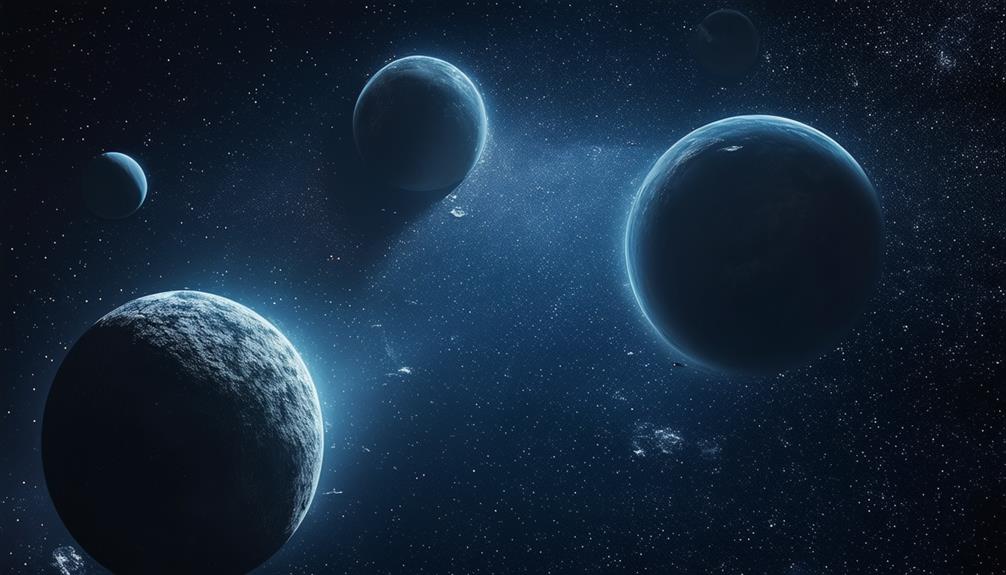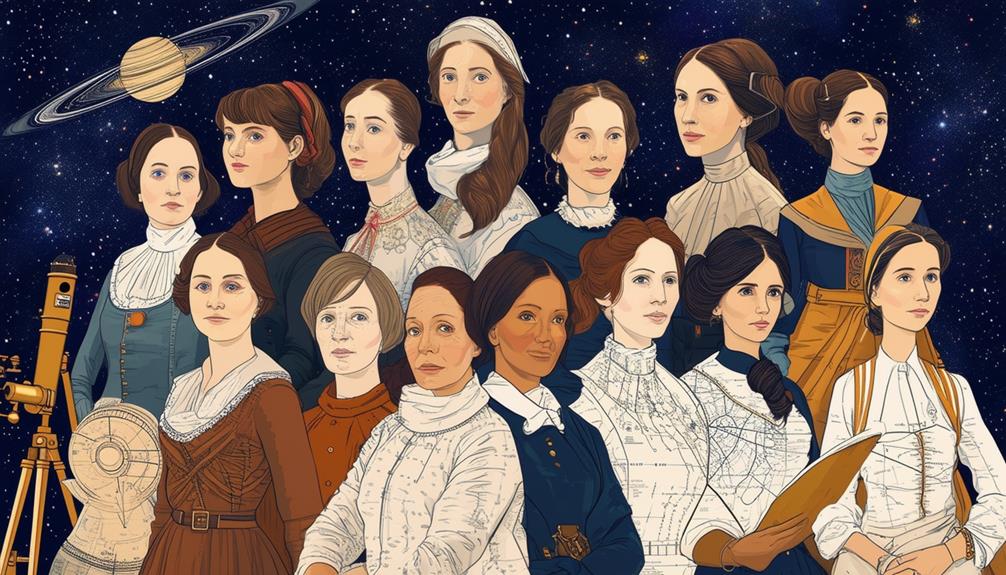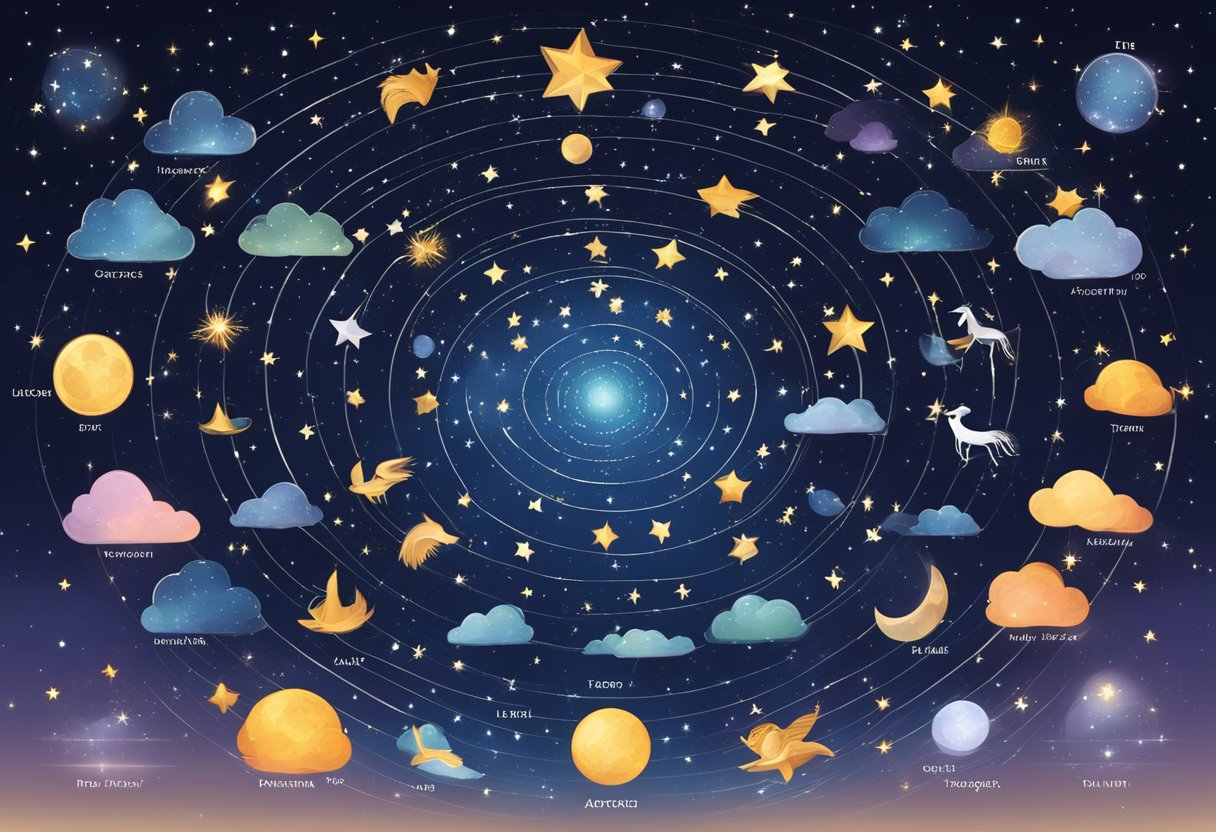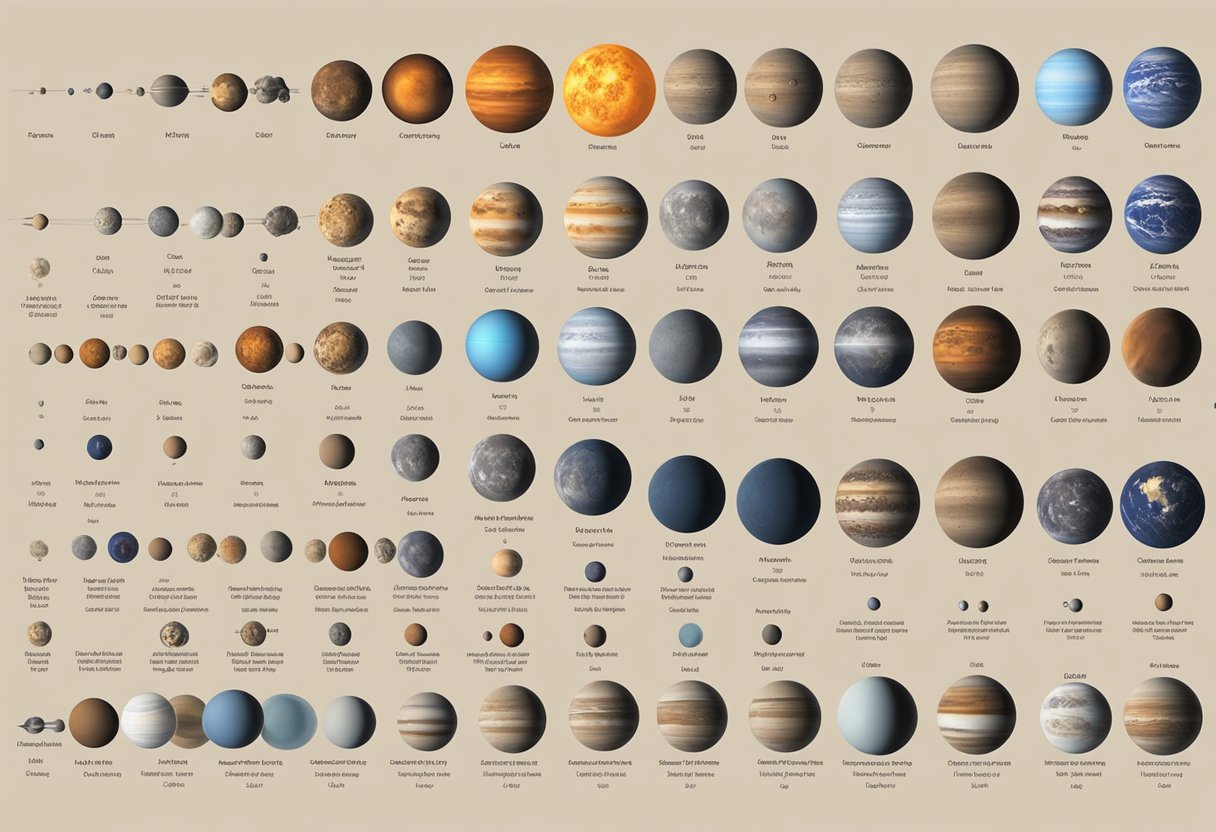Rare Planetary Alignments Through the Ages
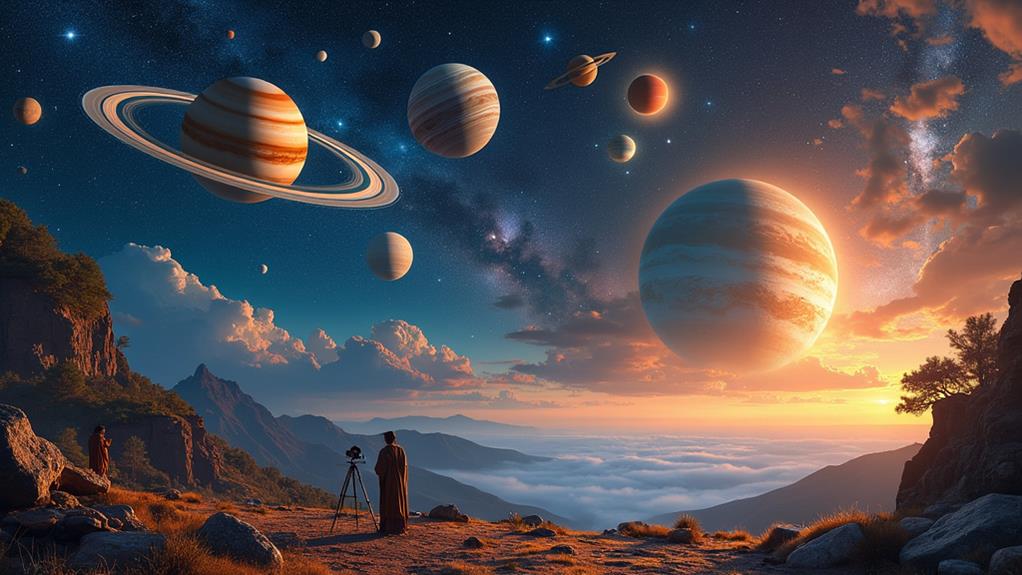
Rare planetary alignments have fascinated and frightened people throughout history. You've probably heard how the 1962 alignment caused public panic or how the 2000 alignment sparked fears of destruction. These events often lead to dramatic predictions, despite minimal gravitational effects from distant planets. Astrologers claim such alignments bring emotional turmoil, while scientists see them as opportunities for exploration, like the 2012 Venus transit. Public interest surges during these events, inspiring both awe and scientific advancements. Upcoming alignments, like those in June 2023, promise even more celestial wonder. Uncover how these cosmic occurrences continue to impact our understanding and beliefs.
Key Takeaways
- Historical alignments often influenced public perception and behavior, sparking fascination and fear.
- Notable alignments include events in 1962, 1919, 2000, and 2022, each generating significant public and media reactions.
- Scientific studies confirm minimal gravitational impact from planetary alignments on Earth.
- Alignments offer unique observational opportunities, advancing our understanding of planetary atmospheres and interactions.
- Future alignments, such as in 2023, 2024, and 2026, promise further advancements in astronomical research.
Historical Context of Alignments
Examining the historical context of planetary alignments reveals how these celestial events have sparked both fascination and fear throughout history. You might be surprised to learn how often people have linked planetary alignment with impending doom or significant changes on Earth. For example, on February 4, 1962, when the Sun, Moon, and five planets aligned, widespread public distress ensued, as many feared catastrophic events would follow.
Similarly, in 1919, rumors spread that a planetary alignment was responsible for the sunspots and the devastating 1918 flu pandemic. These beliefs illustrate the societal impact and the myths surrounding celestial phenomena. Fast forward to May 5, 2000, and you'll find another instance where planetary alignment led to widespread panic. People feared that the gravitational forces from the alignment might destroy Earth.
Even recent events like the December 24, 2022 alignment of all eight planets continue to reignite tales of catastrophic gravitational effects, proving these myths' persistence. Yet, not all perceptions are negative. In the 1970s and 1980s, a rare planetary alignment facilitated the Voyager 2 spacecraft's exploration of the outer planets, showcasing the scientific significance of these celestial occurrences.
Notable Alignments in History
Throughout history, notable planetary alignments have captured human imagination and curiosity. These rare celestial events often trigger a mix of wonder, fear, and speculation. On February 4, 1962, for instance, a significant alignment of the Sun, Moon, and five planets caused public distress and widespread media coverage. This event, like many others, demonstrates the profound impact planetary alignments can have on society.
Consider these remarkable alignments:
- In 1919, rumors linked a planetary alignment to sunspots and the 1918 flu pandemic, showcasing the public's fascination and fear of cosmic events.
- The alignment on May 5, 2000, sparked fears of Earth's destruction due to gravitational forces, reflecting ongoing anxiety associated with celestial alignments.
- The rare alignment of all eight planets on December 24, 2022, reignited stories about catastrophic gravitational effects, despite scientific evidence to the contrary.
- Historical alignments, such as the one that allowed Voyager 2 to investigate the outer planets in the 1970s and 1980s, highlight the significance of planetary configurations in space exploration.
These events underscore how planetary alignments have shaped human history and culture. Regardless of inspiring scientific breakthroughs or sparking existential fears, alignments continue to captivate and influence our world.
Observational Techniques
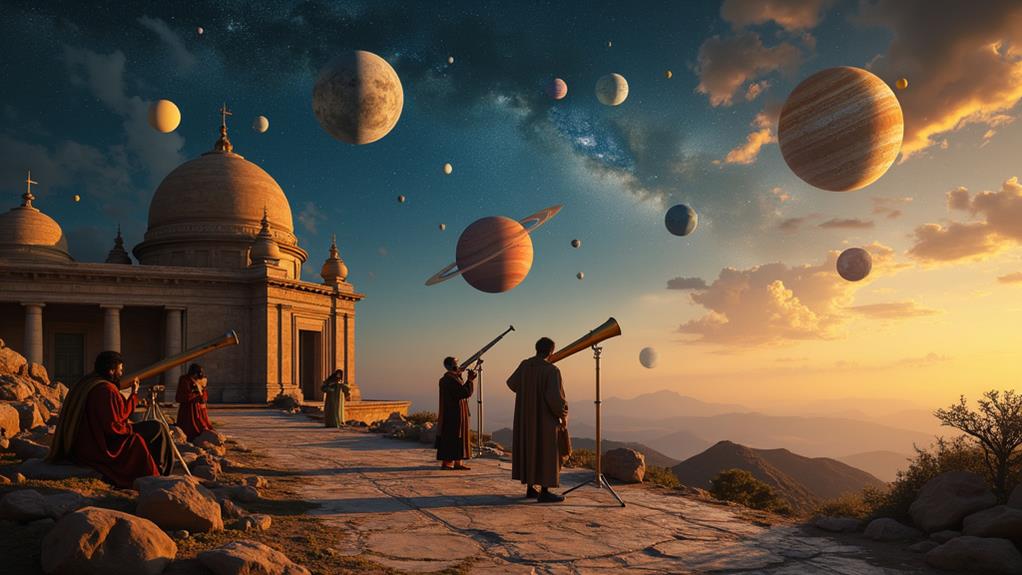
Not only do planetary alignments inspire awe and speculation, but they also drive advancements in observational techniques. During the rare planetary event of the transit of Venus in 2012, scientists creatively used outer planets as reflecting mirrors, enhancing the study of atmospheric conditions. This technique allowed for unprecedented observations and insights into Venus's atmosphere.
When the Sun, Earth, and Jupiter aligned on January 5, 2014, astronomers observed Earth from Jupiter's moons. By utilizing light reflected from these moons, they assessed atmospheric phenomena with remarkable clarity. This alignment also helped identify the Inverse Rossiter-McLaughlin Effect, where an increase in solar brightness during Earth's transit was attributed to atmospheric lensing—an effect only visible during perfect alignments.
Looking ahead, the anticipated Sun-Earth-Jupiter alignment in 2026 promises further advancements. With new Extremely Large Telescopes, scientists aim to confirm theories and study the atmospheric compositions of exoplanets, pushing the boundaries of our knowledge.
These creative observational methods, driven by rare planetary phenomena, continue to refine our understanding of celestial bodies and their interactions. By leveraging these techniques, you too can marvel at the intricate dance of our solar system.
Gravitational Effects
While planetary alignments captivate our imagination, their gravitational effects are often misunderstood. You might think that the combined gravitational pull from Jupiter and Saturn during an alignment would have a significant impact on Earth, but the reality is quite different. The gravitational influence of distant planets is minimal, even during the most perfect alignments. For instance, a perfect alignment would only raise ocean tides by approximately one twenty-fifth of a millimeter.
Consider these facts to gain a clearer perspective:
- Jupiter's gravity is 2.5 times that of Earth, but its vast distance reduces its tidal effect to almost nothing.
- The tidal force from the Sun and Moon is exponentially stronger compared to distant planets.
- Historical fears, such as those during the 1962 alignment, are largely unfounded.
- Despite appearing close together, aligned planets can be millions of miles apart.
- The Moon exerts a tidal force of 2.1, whereas Jupiter's is just 0.0000131.
These points highlight that while Jupiter and Saturn are massive, their gravitational effects on Earth are negligible. The visual spectacle of planetary alignments is far more impactful than any gravitational consequences they might have.
Astrological Interpretations
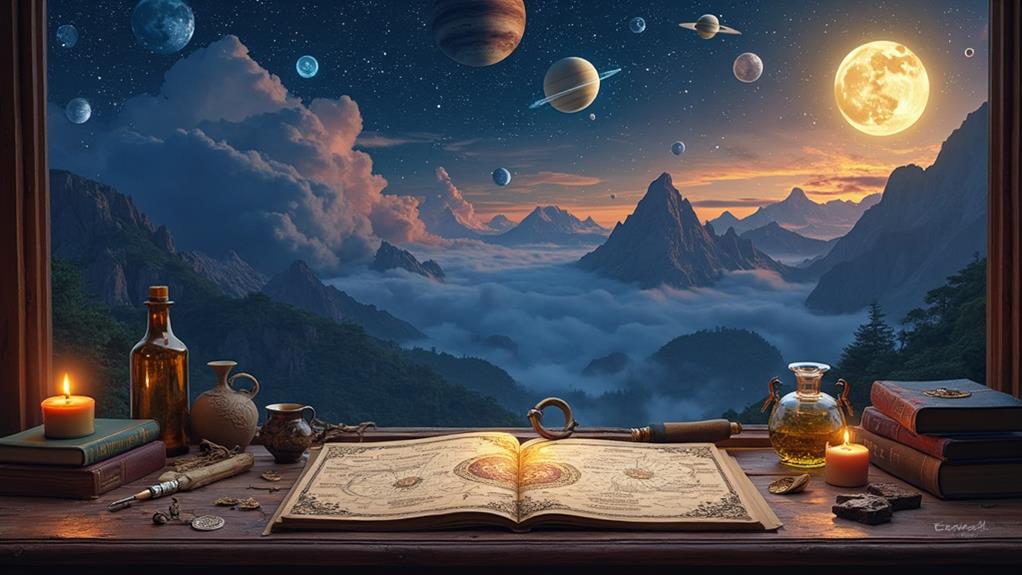
Many people are captivated by the astrological interpretations of planetary alignments, believing they herald substantial changes in human behavior and global events. When planets line up, astrologers often predict shifts in emotions and actions, suggesting these celestial events can influence everything from personal decisions to large-scale societal dynamics.
Historically, the alignment of planets has stirred considerable public reaction. For instance, during the 1962 alignment, widespread panic ensued as rumors linked the event to impending disasters. Likewise, the May 5, 2000 alignment sparked apocalyptic fears, despite scientific reassurances that no catastrophic events were imminent.
Astrologers argue that when planets line up, they amplify impulsive behavior and emotional turmoil. This belief in celestial influence over human affairs is deeply rooted and continues to captivate many. People often turn to astrological forecasts to make sense of their lives, relationships, and the world around them.
Even in the current scientific era, the fascination with astrology persists. Regardless of whether it's for guidance or comfort, the idea that the alignment of planets can considerably affect us remains a compelling narrative. It's a reflection of the enduring human desire to find meaning in the stars.
Upcoming Alignments
Starting with a sense of anticipation, the next significant planetary alignment will occur on June 27, 2023, when Mercury, Uranus, Jupiter, Neptune, and Saturn will all be visible in the pre-dawn sky. This rare alignment offers a unique chance to observe multiple planets of our Solar System in close proximity, making it a must-see event for stargazers and astronomy enthusiasts alike.
Here are some key highlights of the upcoming alignments:
- June 21, 2023: Jupiter's four brightest moons will align, perfect for detailed observations with binoculars or small telescopes.
- June 27, 2023: Mercury, Uranus, Jupiter, Neptune, and Saturn align in the pre-dawn sky.
- January 2024: A complete planetary alignment, excluding Mercury, will be visible.
- 2026: Anticipate a Sun-Earth-Jupiter alignment, offering another celestial spectacle.
- 2109: The next major alignment, a long wait for another grand planetary show.
Don't miss these opportunities to witness the dynamic beauty of our Solar System. Mark your calendars and prepare your telescopes to experience these celestial events that showcase the intricate dance of the planets across the heavens.
Scientific Significance
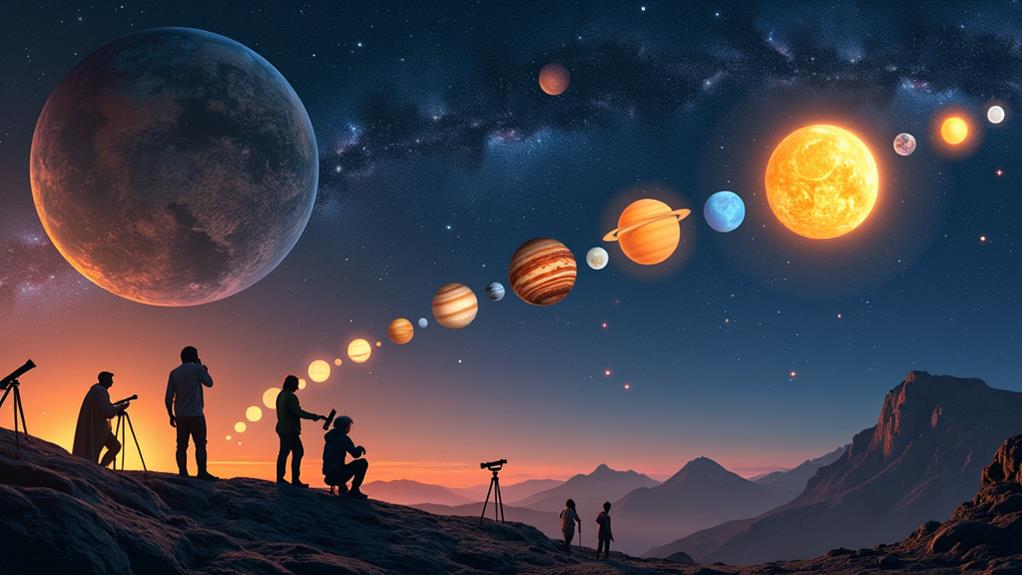
Planetary alignments offer astronomers rare and valuable opportunities to deepen our understanding of celestial mechanics and atmospheric phenomena. When the Sun, Earth, and Jupiter align, like they did on January 5, 2014, it allows for groundbreaking observational techniques. You can utilize these moments to study planetary atmospheres and exoplanets in ways that aren't possible otherwise.
The upcoming alignment in 2026 will be particularly exciting. With advanced tools like the Extremely Large Telescope, you'll be able to confirm theories regarding atmospheric composition and interactions. Historical alignments, such as the one on February 4, 1962, have already sparked public interest and research into the gravitational effects of planetary positions, even though their influence is minimal due to the vast distances involved.
One fascinating phenomenon observed during these alignments is the Inverse Rossiter-McLaughlin Effect, which highlights the complex interactions between planets and their atmospheres. During Earth transits, you might notice an increase in solar brightness on the side of the sun facing Earth.
Understanding the timing and frequency of planetary alignments is essential. They lead to significant revelations about celestial mechanics and the physical properties of distant worlds, making each alignment an invaluable opportunity for scientific advancement.
Frequently Asked Questions
What Are the Rarest Planetary Alignments?
When you're thinking about the rarest planetary alignments, consider celestial events like the Sun-Venus-Earth alignment, which happens every 105.5 to 121.5 years. Another rare event is the Sun-Earth-Jupiter alignment, next occurring in 2026, with a long interval until 2109. Don't forget the significant Sun-Earth-Mars alignment set for 2084. These alignments are infrequent, making them fascinating and worth your attention.
What Is the Rarest Planet Conjunction?
The rarest planet conjunction involves Jupiter and Saturn. Did you know their last exceptionally close alignment was on December 21, 2020? It was the closest in over 794 years! These celestial events, where the planets appear as a double planet, captivate stargazers worldwide. You won't see another similar proximity until 2400, making it a truly extraordinary event in the domain of celestial events.
What Year Will All 8 Planets Align?
You're probably wondering when all eight planets will align again. The next occurrence of this extraordinary event in planetary orbits is expected in 2100. Such alignments, where planets gather on one side of the Sun, create a stunning "pearl necklace" effect in the night sky. These events are rare and offer valuable observational opportunities for astronomers, even though the gravitational influence among the planets is minimal due to their vast distances.
What Is the 5000 Year Planetary Alignment?
The 5000 Year Planetary Alignment is when Mercury, Venus, Mars, Jupiter, and Saturn align in a straight line, happening roughly every 5,000 years. Ancient calendars often marked these rare events, inspiring myths and legends in different cultures. The last notable alignment was in 2000, and the next is projected for 2040. While visually stunning, the gravitational effects on Earth are negligible due to the vast distances involved.

